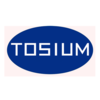高硼DZ444定向合金的初熔行為及其對(duì)力學(xué)性能的影響一種高硼定向合金的初熔行為及其對(duì)力學(xué)性能的影響INCIPIENT MELTING BEHAVIOR AND ITS INFLUENCES ON THE MECHANICAL PROPERTIES OF A DIRECTIONALLY SOLIDIFIED Ni-BASED SUPERALLOY WITH HIGH BORON CONTENT 本文系統(tǒng)研究了高硼DZ444定向合金的初熔行為及其對(duì)力學(xué)性能的影響。結(jié)果表明,在鑄態(tài)合金中,枝晶間包含大量γ/γ?共晶、MC碳化物和由硼化物、Ni5Hf及η相組成的“團(tuán)聚相”。在固溶處理期間,團(tuán)聚相周?chē)芘鸹镲@著影響的γ基體首先發(fā)生初熔。硼化物不是初熔的形核點(diǎn),但是對(duì)初熔的形成具有關(guān)鍵作用。較高的硼含量,使得合金具有較低的初熔溫度,介于1160~1170 °C之間,明顯低于正常合金。提升溫度或延長(zhǎng)保溫時(shí)間,初熔現(xiàn)象變得更加嚴(yán)重。采用水冷(WC)方式,初熔傾向于凝固為典型的γ枝晶和大量細(xì)小的沉淀相顆粒,而采用空冷(AC)方式時(shí),初熔依次凝固為團(tuán)聚相、γ基體和γ/γ'共晶相,團(tuán)聚相形貌與鑄態(tài)時(shí)沒(méi)有明顯差異。完整熱處理時(shí),固溶溫度由1210 °C提升到1230 °C,初熔略微增加,而當(dāng)溫度達(dá)1250 °C時(shí),初熔尺寸和面積分?jǐn)?shù)劇烈增大,對(duì)合金造成災(zāi)難性破壞。由于溫度較低,合金的高、低溫時(shí)效對(duì)初熔組織影響不是很大。最后,研究發(fā)現(xiàn),隨著初熔尺寸和面積分?jǐn)?shù)增加,合金的拉伸性能稍有下降,而持久性能則顯著降低。 A new directionally solidified Ni-based superalloy is used in industrial gas turbine applications, since it has high strength and excellent hot corrosion resistance at high temperatures. The behaviors of incipient melting and its effect on mechanical properties in the new directionally solidified superalloy DZ444 with high boron have been investigated in this work. The results show that some interdendritic regions of the as-cast DZ444 sample exhibit many of γ′/γ eutectic, MC carbides and multi-phases pileup which are composed of boride, Ni5Hf and η. During solution treatments, incipient melting does not occur in boride or Ni5Hf phase with low melting point firstly, but appears in γ matrix around multi-phase eutectic-like constituent which is affected significantly byborides. Firstly, a so-called incipiently melted circle forms around multi-phase pileup; with the increase of the solid solution temperature or time, incipiently melted circle extends inwards which makes γ matrix and multi-phase pileup in this circle melt successively. Finally, an incipiently melted pool forms gradually. Incipient melting is limited to the incipiently melted circle below 1200 °C and the area of incipient melting changes with temperature or time correspondingly. However, incipiently melted region (IMR) expands outwards continuously which makes γ matrix outside the incipiently melted circle melt when the temperature is higher than 1210 °C. Especially, IMR swallows up plenty of γ matrix, and many matrix islands, regions unmelted, exist in IMR above 1250 °C which destroys the continuity of the matrix significantly. The incipient melting has a minor effect on the tensile properties, nevertheless, decreases the creep-rupture properties remarkably. Therefore, appropriate solution heat treatment temperature and time is important to avoid the occurring of incipient melting, which can ensure the good microstructure and mechanical properties of DZ444. 全文下載:http://pan.baidu.com/s/1sl8myWt
|







